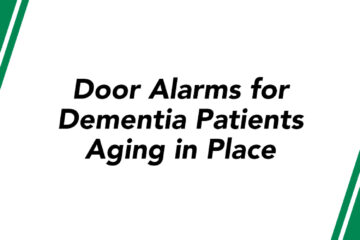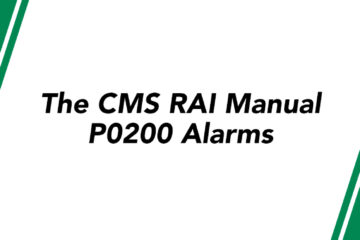Are you looking for a fall prevention solution for your senior?
Falls are a serious health issue among seniors. While falls in the general population usually come about due to dangerous work or leisure activities, seniors are at greater risk of falling in their day-to-day activities. Medications, vision impairments and general weakness can combine with environmental factors to put seniors in danger of seriously injuring themselves in any fall.
To put this into perspective, it is estimated that every 11 seconds, an older adult is treated in the emergency room for a fall and every 19 minutes, an older adult dies from a fall. According to the national council of aging, one in four Americans over the age of 65 fall each year, which equated to around 36 million seniors in 2019.
Naturally, these falls have a negative impact both emotionally, physically and financially for seniors and their families. In a number of cases, seniors who sustain a fall are susceptible to various physical problems such as fractures and even serious traumatic brain injuries, resulting in hospitalizations. The psychological implications are also worth mentioning, as the sheer fear factor that emerges as a result of a fall can be so prolific that they avoid social and physical interaction. These falls can completely take away their sense of pride and independence, reducing them to a feeble and fragile version of their former self.
To add insult to injury, after significantly affecting their physical and mental wellbeing, they are presented with a hefty hospital bill that averages around $30,000 in hospital fees; a figure that is continually on the rise in recent years.
The worst part about all of this is the fact that Falls are completely preventable. Thankfully, we have some solutions that are low cost yet extremely high-quality…
Costs of Caregiving
According to the Care.com 2019 Cost of Senior Care survey which compiled insights from more than 7,500 family caregivers nationwide, many seniors are not financially prepared to pay for medical costs and care facilities. In fact, the report suggests that less than half of care recipients have retirement savings and only 11% have long-term care insurance. As a consequence, it is typically up to the family caregivers to dip into their own pockets to pay for their loved ones’ expenses.
Indeed, there are a number of options that many families caring for seniors can opt for, but they come at a huge financial cost which people do not have the money to pay for. Having round-the-clock assistance for aging parents is imperative to ensuring their overall safety, but these come at a significant cost. We break this down below;
Costs of in-home senior care
The Care.com data provides national average fees for in-home senior care facilities, which in 2018 was as much as $17.32 per hour. The daily cost of adult care – a form of respite care for seniors – was $72 a day and assisted living communities and nursing homes average anywhere between $180-$275 per day.
As such, caregivers are feeling the financial strain. According to survey findings, 32% of caregivers say expenses related to caregiving far exceeded what they expected to spend and 27% say they are the sole person responsible for covering the financial costs of their loved ones. It is projected that a caregiver will spend between $100 and $1,000 a month on caring for a loved one – whether this is through care facilities, medical bills or daily nurse visits.
Asides from the financial implications that occur as a result of caregiving, there are also numerous emotion and relationship problems that affect the lives of caregivers on a daily basis. Caring for their loved ones means changing their working hours – whether it be reducing their shift patterns or just resigning all together to provide support for their parents.
They also are often faced with making a choice between socialising with their friends / spouses or providing care for seniors; the latter prioritised in the majority of cases. In turn, this can render serious mental health implications for those caregivers who are exhausted and constantly anxious when caring for their loved ones.
How to Pay for Seniors Care?
While there are various ways to pay for medical care facilities that can support family caregivers, their effectiveness is subject to debate…
Medicare is one option that you can take. However, when it comes to funding long-term senior care, it is limited in scope. For example, in order to qualify for Medicare you must fall below a certain income threshold and for those seniors who require nursing facilities after a qualifying hospital stay, medicare only covers the first 20 days. There onwards you’re responsible for a daily fee of $170.50, which increases after 100 days, making this a nonviable option for many.
Long-term care insurance is another option. This is a financial product you pay for overtime and if you get to a point where you can no longer care for yourself and need in-home senior care or need to go to a facility, it covers some of the costs. However, if you don’t have long-term care insurance and need senior care now, it’s usually too late to get the insurance.
Finally, seniors can choose to age in place. A new phenomenon that has become increasingly popular in recent years due to the ever demanding price tags attached to care facilities.
Allowing seniors to continue living in the comfort of their own home can provide a source of comfort for elderly individuals. As you age, you want to be surrounded by familiarity, with friends and neighbors that you know and feel safe around. Removing them from this familiar setting can be detrimental to their overall health and wellbeing – particularly for seniors with Alzheimers – as it can render feelings of disorientation and stress which has been known to cause problems like wandering and falling.
In addition to reducing stress and being more financially amenable, aging in place has other benefits, too. According to a Care.com survey, care recipients living in their own homes are less likely to require full-time care and are more likely to be happy in their care situation.
Moreover, their caregivers are usually less likely to end up being responsible for their huge financial costs.
Making Aging in Place Safe
While aging in place has its positive attributes, there are still some obvious drawbacks. Firstly, the lack of 24 hour assistance and professional care facilities means that the seniors may not be getting the attention they desperately require. As such, they can still be susceptible to falling in their home and injuring themselves, causing them to be transferred to a care-facility where they can be monitored at all times. Those seniors with Alzheimer’s are also more likely to cause harm to themselves when left to age in place. Wandering is a major concern amongst seniors suffering from the disease, as they will often experience surges of energy to leave their homes but end up getting lost and confused on their way.
While the stress associated with paying medical care may be alleviated for caregivers when their loved ones age in place, the constant panic for their general well being is still a problem. In fact, aging in place will likely accentuate such anxiety as there are no professionals around to look after seniors when they are on their own.
So what can they do?
Thankfully, there is a happy medium which is designed to take care of the financial, physical and emotional implications associated with aging seniors. Innovative technology now provides the opportunity to bridge the gap between excessive medical bills and seniors overall safety; fall prevention products
Fall prevention products are created with one goal in mind, to stop falls. Whether it’s in the middle of the night or during the daytime, fall prevention products can help mitigate the chances of seniors causing major harm to themselves when left alone at home.
Bed exit alarms and pressure pads, to name a few, act like a professional medical assistant, monitoring your loved ones movements when they are getting up at home. Any sign of movement and the caregiver will be notified by a signal sent from the system to your own personalized pager, alerting you that your loved one has got up out of bed or is attempting to leave the home. The only difference is they cost as little as $90, in compared to the thousand of dollars spent on care facilities.
Aging in place can become significantly easier with preventative measures incorporated within the home, as caregivers have the freedom to attend to other tasks, knowing they will be alerted when assistance is needed. This also allows seniors to remain in the comfort of their own home, maintaining their overall independence and freedom – significantly improving their own mental wellbeing overtime.
For more information, call our friendly team today or browse our shop to see how we can help relieve the struggles of aging.


